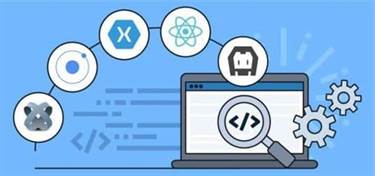What Are Three Types Of Remote Meetings
This type of assistance would take up transcribing even the shortest conversations. There would be no misunderstandings, as the complete transcription is accessible after the meeting and can be shared with others. In addition, as tasks can be constantly distributed, with the help of AI, meeting assistants can recognize potential tasks or mark the essential details. Usually, in the shorter sessions, note-taking is not considered necessary; thus, the ideas generated could be easily lost. Also, the tasks are distributed throughout the meeting, not only at the end of it.
- It’s also a good idea to look for useful features that can keep your team engaged while on the call.
- Remote-friendly companies may not have a fully developed digital infrastructure specifically tailored to remote work, but they typically have systems in place to support remote employees.
- Instead of a moving speech or asking the ambiguous “Anything else we should cover?”, end the meeting by reviewing what you’ve accomplished and what will happen next.
- It may utilise a special event website or standard video meeting/ conferencing tools to bring people together.
- When that time comes, the right technology can make it a much better experience.
A virtual meeting is simply a meeting that happens online rather than physically with all the participants in the same meeting room. Organizing and executing a successful remote meeting involves more moving parts and considerations than your classic in-person meeting. The organizer will need to assess and account for technical requirements, coordinate speakers, an agenda, and the platform they’ll use to manage the call. Whether your team is small or large, you can adjust these tips accordingly for a better experience at your next remote meeting.
Your ultimate guide to remote work meetings
A project kick-off meeting is the first meeting with the management team and, if applicable, the customer. This meeting is designed to outline the project’s purpose and shared objectives. It is an introductory meeting to every project, as it sets the roadmap for how to run a effective remote meeting a project. Also, it would be beneficial to prepare the right tools before each meeting. Even the slightest errors with the communication platform or other devices used can distract the participants from the main objectives and thus result in less productivity.
And in case you’re wondering, I don’t like to work in monastic seclusion. I am a deeply collaborative worker and find it difficult to get work done unless it’s with someone else. Just because there’s no need to attend the meeting physically doesn’t mean you shouldn’t participate.
Choose channels carefully
Clarify the agenda to use with other attendees and immediately deprecate the additional agenda. Add a link to the agenda being used from the deprecated agenda, so anyone who discovers it is aware of the source of truth agenda. Recurring meetings are often established as meaningful points along a given journey. Don’t hesitate to cancel them after their purpose has been served.

Apart from the standard practices, it is imperative to engage and include everybody in remote meetings to energize the participants and keep them engaged. With virtual meetings, geographical barriers don’t stop the companies from exploring the global talent pool and reach for the best resources to expand their business. Furthermore, the teams are managed centrally where every member can access, share, view, and exchange files with the relevant person. Online platforms have several features that facilitate successful virtual collaboration among cross-functional teams. Remember that time you managed to complete a project without any errors or mishaps? Retros allow teams to review a completed project, discuss what went well and what went wrong, and implement improvement plans for future projects.
Work From Home Video Conferencing Setup: A Quick Guide
Remote meetings are used by companies, organizations, digital marketing agencies, accounting outsourcing firms, IT staff augmentation companies, etc. that work remotely or hybrid-remotely. They can be compared to their equivalent of in-person meetings, but have their own benefits of being remote. These use pre-recorded content along with video streaming to connect people in different locations. Companies with dispersed teams use remote meetings to enhance collaboration. Organizations also use remote meetings to engage with their clients and share documents. A remote meeting, also known as a virtual meeting, occurs when a group of people, who are dispersed across different locations, use video and audio to connect online.

When it comes to transitioning a team to remote meetings, it’s important to establish meeting guidelines and the rules of engagement in the virtual workplace. It provides HD video conferencing and screen sharing, along with team messaging. Its annotation feature, meanwhile, allows team members to point at what they see on screen, as they would in a face-to-face meeting.

Project management tools like ClickUp or Asana help keep everyone organized and on track, which is especially important when working remotely. To set communication guidelines, start by identifying the most common types of communication that take place within your team. This may include email, instant messaging, video conferencing, and project management tools. Daily or weekly standups are a quick way for remote teams to check-in and ensure that everyone is equipped to get there promptly.
We have a growing team working in over 65 countries, with many time zones covered, which makes synchronous meetings impractical, burdensome, and inefficient. Anyone who has worked in a corporate environment has likely seen the sarcastic “I Survived Another Meeting That Should Have Been An Email” award. As an all-remote company, we do not look to a meeting by default; when they are necessary, we strive to make in-person attendance optional by enabling asynchronous contribution.